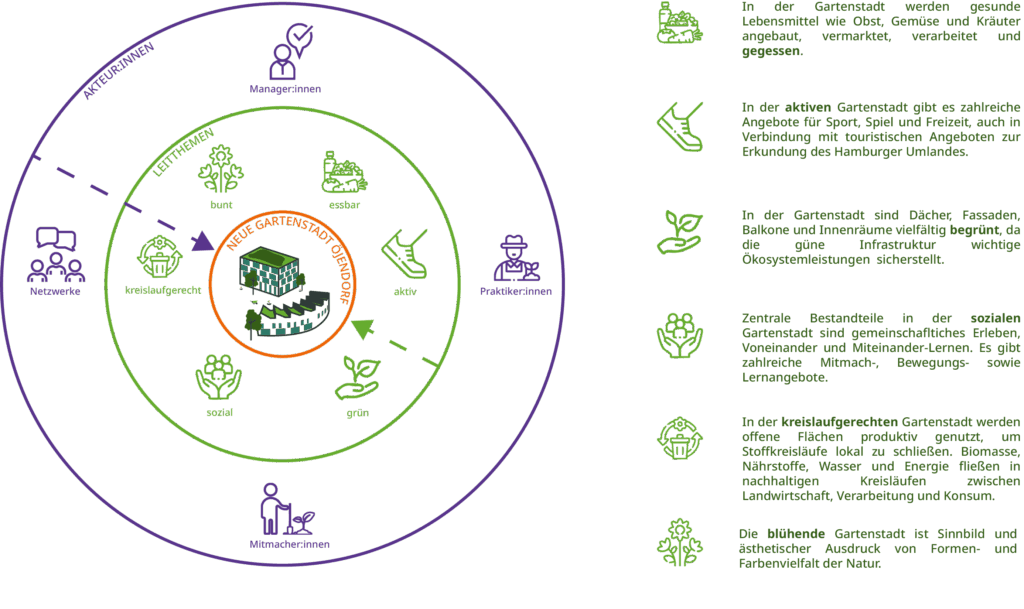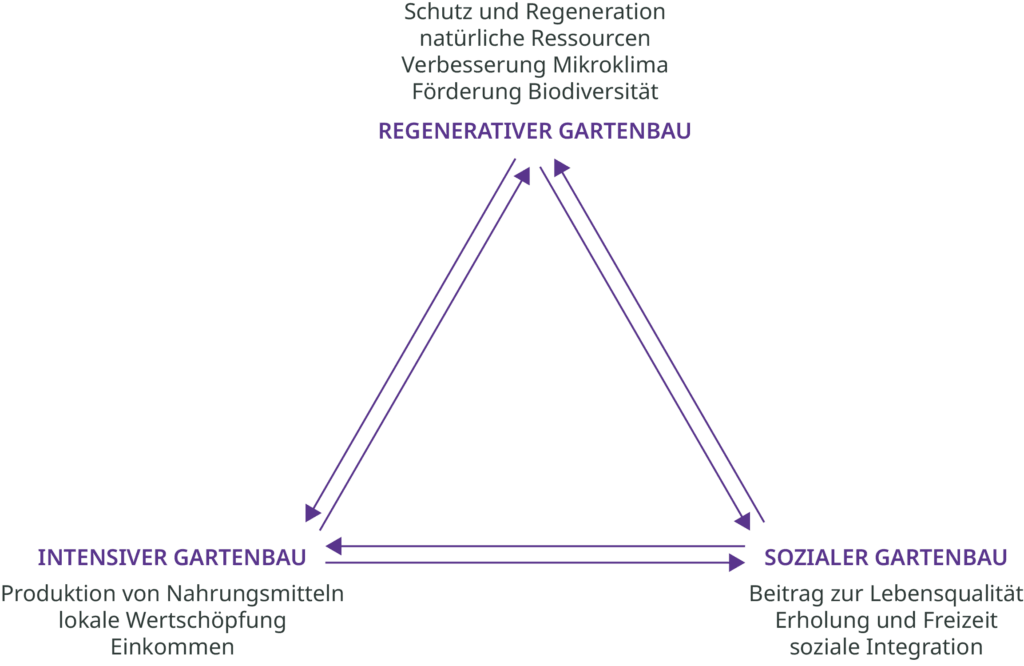Vision Garden City Öjendorf
The Öjendorf Garden City represents a forward-looking urban model that combines living, working, recreation, and production in a balanced relationship. Based on the Charter of the New Garden City Öjendorf, a conceptual framework for urban agriculture has been developed, which is oriented towards six guiding themes of a livable garden city. These guiding themes serve as a link between innovative forms of horticulture – from production to marketing and service offerings – and a sustainable use of public and private spaces in the sense of a “productive park.”
Urban agriculture in the garden city is not only seen as an economic resource, but also as a social, ecological, and cultural infrastructure: it can generate income, strengthen regional value creation, provide places for education and encounters, promote health and nutrition, and contribute to climate and biodiversity protection. The Innovation Area Öjendorf will thus become a showcase for this vision – a place where urban agriculture can be experienced and various groups of actors work together on solutions for the city of tomorrow.

Methodology & Scenarios: Rethinking Agriculture in the Urban Space
Together with practitioners, planners, administration, farmers and civil society initiatives, we are developing three different usage scenarios for the Innovation Area Öjendorf. These scenarios highlight possible approaches – from regenerative agriculture to technologically optimized forms of production and socially oriented agricultural production.
The Innovation Area will thus become a real laboratory for the urban agriculture of tomorrow – regionally anchored, ecologically sustainable and socially embedded. Our goal: to make the range of possible design approaches visible and to explore their planning and legal framework.
- Scenario 1: Regenerative horticulture and resilience
- Scenario 2: Intensive horticultural production
- Scenario 3: Social agriculture
For each scenario, we consider a variety of aspects – from cultivation practices, land use and technological equipment to economic models and network analysis, to questions of participation, education, community building and climate adaptation.
In the coming months, the scenarios will be further developed together with experts and stakeholders, deepened in workshops and concretized as spatial planning concepts. This creates a versatile tool for designing multifunctional agricultural and recreational spaces in the city.
